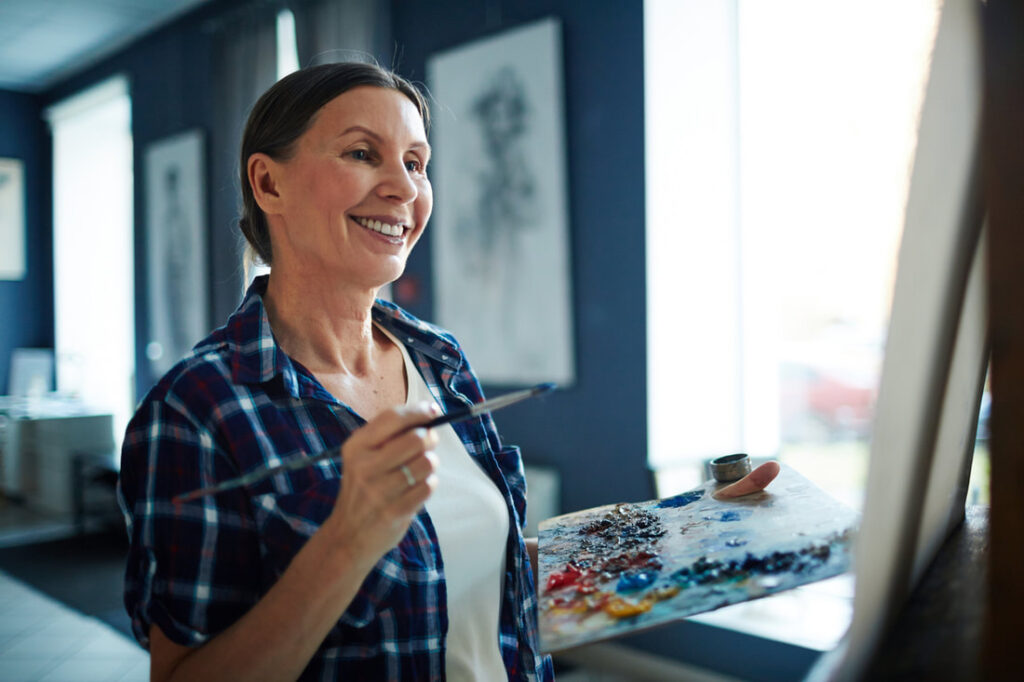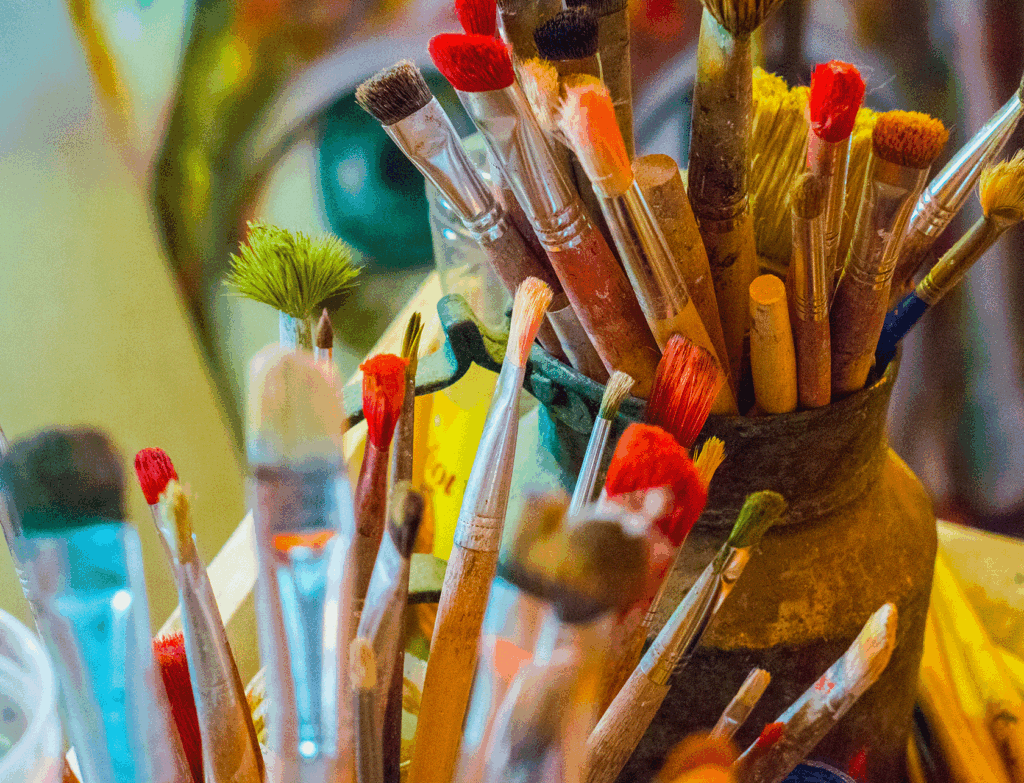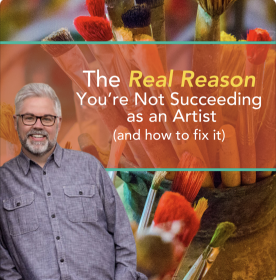
Retirement marks the beginning of a new chapter, one where many people finally have the time to pursue passions they may have set aside during their working years. For many, this means becoming an artist and exploring the possibility of turning their lifelong hobby into a profitable art business. Whether you’re nearing retirement or already enjoying it, this season of life presents unique advantages that make it an ideal time to dive into the world of professional art. In this article, we’ll explore why becoming an artist in retirement can be so rewarding, and offer tips on how to become a successful artist during this exciting phase.
Why Retirement is the Perfect Time for Becoming an Artist
1. Time to Focus on Your Passion
During the busy years of a career, raising a family, or managing other responsibilities, many aspiring artists find it challenging to dedicate consistent time to their creative pursuits. However, retirement opens up new possibilities. With fewer demands on your schedule, you can carve out regular hours for painting, sculpting, or any other artistic endeavor that lights up your soul.
Retirement allows you to set your own pace, experiment, and explore new styles without the pressure of deadlines. This freedom makes it easier to become a successful artist because you can immerse yourself in your craft and invest the time needed to grow your skills.
2. Life Experience Fuels Creativity
One of the unique advantages of starting an art business later in life is the wealth of life experiences you bring to your work. Your journey, experiences, and perspective can give your art depth and richness that younger artists may still be developing. Whether it’s the stories you’ve lived, the places you’ve traveled, or the emotions you’ve felt, all these experiences can inspire your work and make it resonate more deeply with others.
Your ability to draw from a lifetime of experiences can also help you connect with your audience. People who purchase art often seek pieces that speak to them emotionally, and your seasoned perspective can offer that in a powerful way. This is why understanding how to become a professional artist in retirement means leveraging your unique voice and story to create meaningful art.
3. Financial Flexibility
While building a career as an artist can be financially challenging, many retirees have the advantage of financial stability. If you have a pension, savings, or other forms of retirement income, you can pursue your art business without the same pressure to make a full-time income right away. This flexibility allows you to focus on your creative expression and slowly grow your business at a pace that feels comfortable.
This financial cushion also enables you to invest in quality materials, take courses to refine your skills, or attend workshops that can enhance your craft. Learning how to become a successful artist doesn’t happen overnight, but the ability to invest in yourself and your business will certainly help along the way.
How to Become a Professional Artist in Retirement
4. Focus on What Makes You Unique
One of the first steps in becoming a professional artist is finding your unique voice. Reflect on your artistic journey and consider what themes, styles, or subjects consistently appear in your work. This is your artistic voice, and it’s what will set you apart from others.
Do you love painting landscapes that evoke nostalgia? Are you inspired by nature’s intricate details? Do you create abstract pieces that convey emotion? Embrace these aspects of your work because they make your art distinctly yours. Customers are drawn to artists who have a clear identity and story, so take time to refine and showcase what makes you special. Understanding this can be a game-changer in how to become a successful artist who stands out in the market.
5. Develop a Business Plan
Even if you don’t see yourself as a traditional businessperson, having a simple business plan can help clarify your goals and set you on the right path. Ask yourself some key questions:
- What kind of art do I want to sell?
- Who is my target audience?
- How much time can I dedicate to creating and marketing my art?
- What are my short-term and long-term goals for my art business?
Answering these questions will give you a roadmap to follow and help you navigate the journey of how to become a professional artist. Plus, a business plan can help you budget for materials, marketing, and other expenses, ensuring your art business is both sustainable and enjoyable.
6. Learn the Basics of Marketing and Promotion
One of the biggest challenges for new artists is getting their work seen. Fortunately, today’s digital world makes it easier than ever to reach a global audience. Understanding how to market yourself online is essential in becoming a successful artist. Here are a few tips:
- Build an Online Portfolio: Create a website where you can showcase your work, share your story, and make it easy for customers to contact or purchase from you.
- Leverage Social Media: Platforms like Instagram, Facebook, and Pinterest are perfect for visual artists. Share your work regularly, engage with your followers, and use hashtags to reach a broader audience.
- Engage with Online Art Communities: Join forums, groups, or online platforms dedicated to artists. Networking with other artists can lead to opportunities, collaborations, and support. Plus, these communities often share insights on how to become a professional artist, including marketing and sales strategies.
Advantages of Starting an Art Business in Retirement
7. Freedom to Explore and Experiment
In retirement, there’s less pressure to follow trends or meet the demands of clients. You can create what you love, experiment with different mediums, and explore new techniques. This freedom can lead to more authentic and joyful creations, which is often what buyers are looking for. By following your passion, you’ll naturally develop a style that resonates with your audience, helping you on your journey of becoming a successful artist.
8. The Joy of Learning New Skills
Retirement is a great time to learn, and if you’re serious about how to become an artist, this can mean acquiring new skills that improve your craft or business acumen. You might decide to take an online course on a painting technique you’ve always wanted to try or learn how to use digital tools to enhance your work. Many successful artists also take courses on business topics, like pricing, sales, and social media marketing, to better manage their art business.
The joy of learning something new keeps the creative spark alive and helps you grow as an artist and entrepreneur. Plus, continuous learning will give you confidence in your journey of becoming a professional artist.
9. Building a Legacy
One of the most meaningful aspects of pursuing art in retirement is the opportunity to build a legacy. Whether you’re creating works that reflect your personal story, capturing cherished memories, or simply producing beautiful pieces that will be enjoyed for years to come, your art can be a lasting testament to your passion and creativity. This is more than just how to become an artist; it’s about making your mark and sharing your vision with the world.
For many, the idea that their work will live on even after they’re gone is deeply fulfilling. It’s a way to leave a piece of themselves behind and be remembered through the creations they’ve poured their heart into.
Practical Tips for Becoming a Successful Artist in Retirement
10. Start Small, Dream Big
It’s easy to get overwhelmed when you’re just starting out. Instead of trying to do everything at once, start small. Focus on building a collection of work that represents your style, and gradually introduce it to your audience. As you gain more confidence and understanding of how to become a professional artist, you can expand your efforts, try new marketing strategies, or branch out into different mediums.
11. Network and Collaborate
Building connections is a key aspect of becoming a successful artist. Attend local art fairs, exhibitions, and workshops to meet other artists, potential buyers, and gallery owners. These networking opportunities can lead to collaborations, exhibitions, or partnerships that can elevate your art business. Don’t be afraid to reach out and introduce yourself—you never know what opportunities may arise from a simple conversation.
12. Seek Mentorship and Community
Learning from those who have already traveled the path can make a significant difference in your journey. Consider joining a mentoring program or online community where you can receive guidance, ask questions, and learn from more experienced artists. The Created to Thrive Artist Mentoring Program is an excellent resource for artists who are Christians and want to build their art business, spiritual life, and creative practice from a faith-based perspective. Programs like this can offer invaluable support and help you navigate the ins and outs of how to become a successful artist.
Becoming an artist in retirement is a beautiful way to express yourself, share your story, and find fulfillment in this new season of life. With the advantages of time, life experience, and financial flexibility, this is the perfect opportunity to turn your passion into a thriving art business. Whether you’re just starting to explore how to become an artist or you’re ready to take your hobby to the next level, remember that the journey is as rewarding as the destination.
Ready to take the next step in your journey of becoming a professional artist? Consider joining the Created to Thrive Artist Mentoring Program. It’s designed to help artists like you grow your art business, spiritual life, and creative practice from a Christian perspective. Get started today by visiting www.www.matttommeymentoring.com/artmentor and discover how you can thrive as an artist in this exciting season of life.



Leave a Reply